Are you a fan of drama, opulence, and rich colors? If yes, then the Baroque interior design style is just the thing for you. This extravagant style will make your home a palace of your dreams, filled with luxurious details and majestic atmosphere. In this article, we will dive deep into the history of Baroque interior design, explore its key elements, and learn how to incorporate it into your home. So, let’s embark on this journey of lavishness and grandeur!
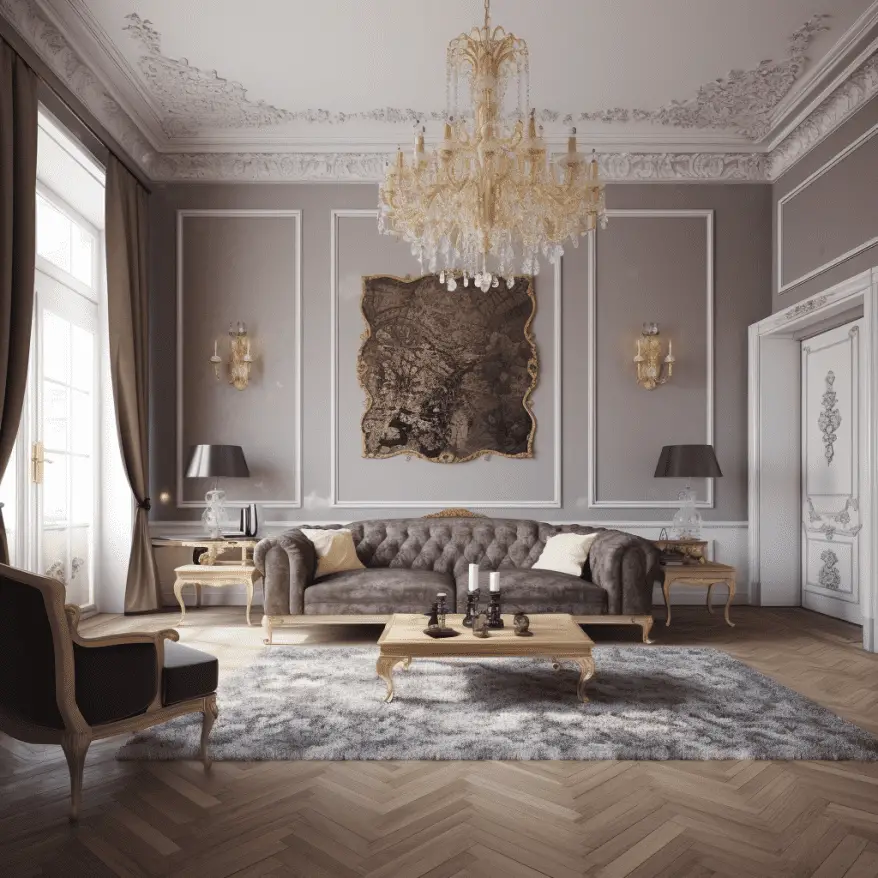
Table of Contents
History of Baroque Interior Design Style
Baroque interior design originated in the 17th century during the Baroque period, which was marked by artistic, architectural, and cultural developments in Europe. This style was a reaction to the simpler, more austere designs of the Renaissance era. The Baroque period saw a surge of creativity, with artists and designers using elaborate techniques and decorations to create awe-inspiring spaces.
Initially, the Baroque style was popular among the Catholic Church and aristocracy, who used it to showcase their power and wealth. However, as the style evolved, it became more accessible to the middle and upper classes, who embraced its opulent charm.
Key Elements of Baroque Interior Design Style
The Baroque interior design style is characterized by a variety of elements, including:
Ornate details
One of the most prominent features of Baroque design is the use of intricate, ornate details. Think gilded moldings, sculpted ceilings, and lavish chandeliers.
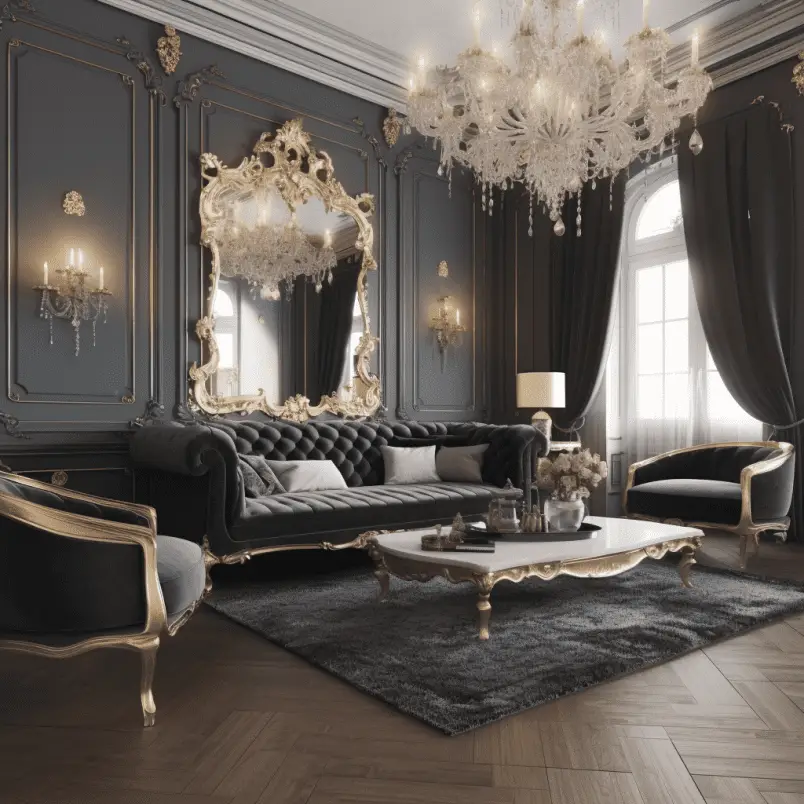
Dramatic contrasts
Baroque interiors play with light and shadow, creating dramatic contrasts that add depth and intensity to the space.

Rich colors
Baroque design uses a palette of deep, bold colors, such as red, gold, and purple, which evoke a sense of luxury and sophistication. These colors are often combined with lush fabrics like velvet and silk to create a regal atmosphere.

Curves and movement
Unlike the geometric patterns of the Renaissance, Baroque design embraces curves and movement, with flowing lines and dynamic shapes. This can be seen in the furniture, wall treatments, and even the layout of the rooms.

Large-scale artwork
Baroque interiors often feature grand, eye-catching artworks, including large paintings, sculptures, and frescoes. These artworks serve as focal points and add to the overall sense of grandiosity.
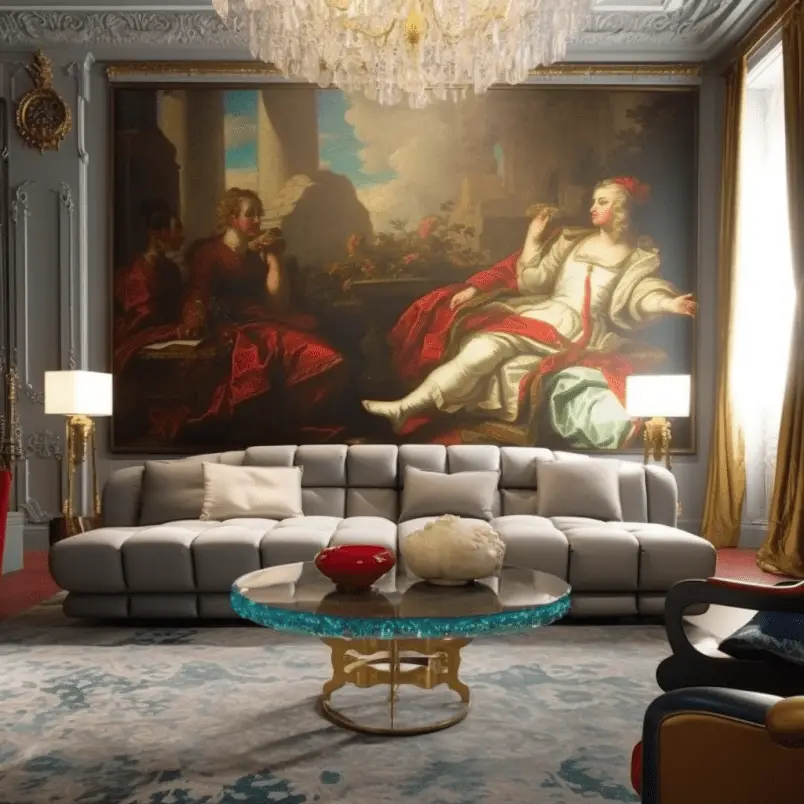
How to Incorporate Baroque Interior Design into Your Home
Incorporating Baroque design into your home doesn’t mean you have to live in a palace. Here are some tips on how to bring the essence of Baroque style into your space:
- Choose rich colors: Start by selecting a color palette that reflects the opulence of Baroque design. Choose deep, rich hues like burgundy, emerald green, or navy blue for your walls, and use gold accents to create contrast and add a touch of luxury.
- Embrace ornate details: Look for furniture and decorative items with intricate carvings, gilding, or other elaborate details. This can include mirrors with ornate frames, carved wooden furniture, and decorative molding on walls and ceilings.
- Incorporate luxurious fabrics: Use plush, luxurious fabrics like velvet, silk, or brocade for upholstery, curtains, and cushions to create a sumptuous atmosphere.
- Invest in statement lighting: A large, ornate chandelier can instantly transform a room and bring a touch of Baroque glamour to your space.
- Mix old and new: Don’t be afraid to blend modern elements with traditional Baroque pieces. This can create an eclectic, yet harmonious look that feels fresh and current while still maintaining the essence of the Baroque style.
Baroque Interior Design in Different Rooms
Baroque design can be incorporated into various rooms of your home to create a cohesive, luxurious atmosphere. Here’s how:
Living room
Opt for an ornate fireplace, plush seating, and a grand chandelier to create a dramatic focal point. Use rich fabrics and colors for curtains and upholstery to enhance the luxurious feel.
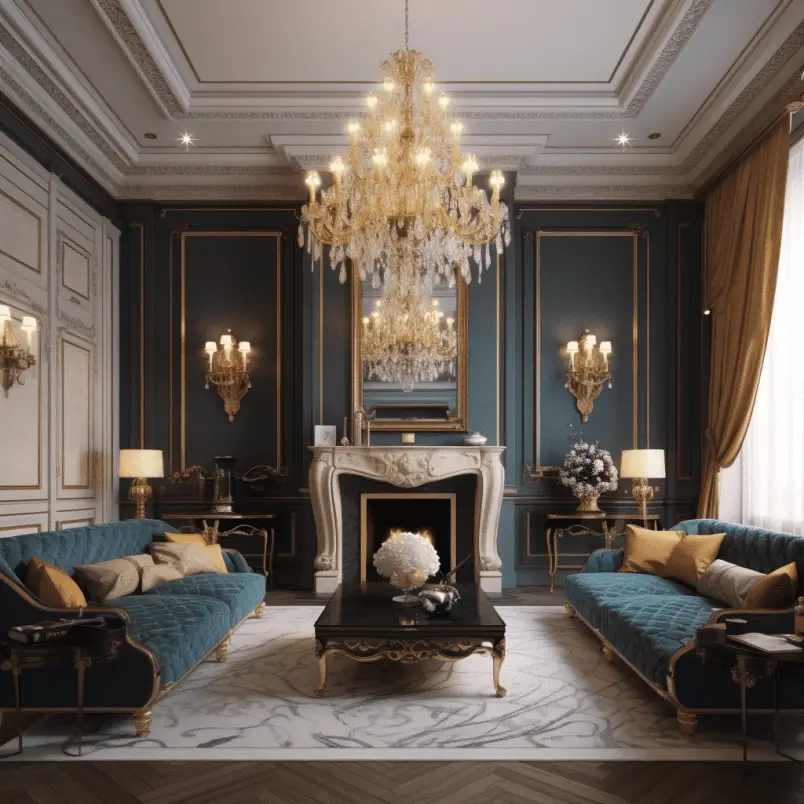
Bedroom
Choose a four-poster bed with intricate carvings, and drape it with lush fabrics for a truly regal sleeping space. Add elaborate mirrors, wall sconces, and a luxurious rug to complete the look.
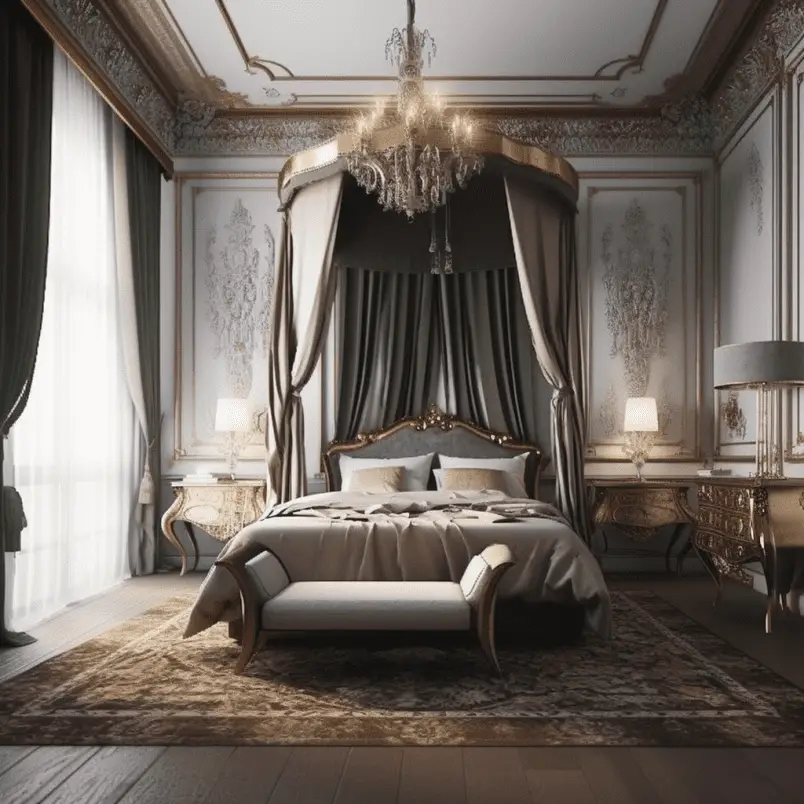
Dining room
Invest in a statement dining table with carved legs and rich upholstery. Complement it with an impressive chandelier, gilded mirrors, and ornate wall treatments.

Bathroom
Create a lavish, spa-like experience with a freestanding bathtub, gold fixtures, and marble or intricate tilework.
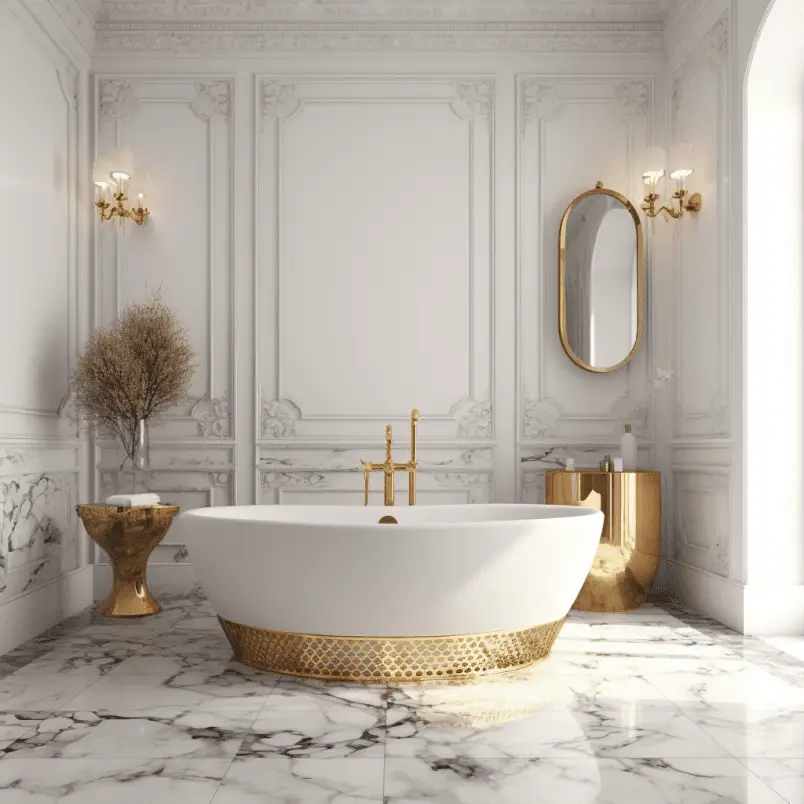
Pros and Cons of Baroque Interior Design
As with any design style, Baroque interiors come with their own set of advantages and disadvantages:
Pros:
- Baroque design offers a sense of grandeur and opulence that few other styles can match, making your home feel truly luxurious.
- The use of rich colors and fabrics can create a warm, inviting atmosphere, perfect for relaxation and entertaining.
- The attention to detail in Baroque interiors can result in a visually stunning and unique space.
Cons:
- Baroque design can be overwhelming and may not suit everyone’s taste, especially those who prefer minimalism or more understated styles.
- The elaborate details and high-quality materials often associated with Baroque design can be expensive, making it a less budget-friendly option for some homeowners.
- The dramatic and ornate nature of Baroque interiors may require more maintenance and care, particularly when it comes to cleaning and preserving the intricate details.
Conclusion
The Baroque interior design style is a celebration of opulence, drama, and intricate details, perfect for those who appreciate the finer things in life. While it may not be everyone’s cup of tea, incorporating elements of Baroque design into your home can create a luxurious and visually stunning space that leaves a lasting impression. Remember to balance the bold elements with more understated pieces, and you’ll have a home that exudes elegance and grandeur.
FAQ
What is the origin of the Baroque interior design style?
The Baroque style originated in the 17th century during the Baroque period in Europe. It was a reaction to the simpler designs of the Renaissance era and was initially popular among the Catholic Church and aristocracy.
What colors are commonly associated with Baroque interior design?
Baroque design typically features a palette of deep, bold colors such as red, gold, and purple. These colors evoke a sense of luxury and sophistication.
What types of materials are commonly used in Baroque interiors?
Baroque interiors often use luxurious materials like velvet, silk, brocade, marble, and gilded wood to create an opulent atmosphere.
Can I mix Baroque design with modern elements?
Yes, you can mix Baroque design with modern elements to create an eclectic and harmonious look. Blending traditional Baroque pieces with contemporary furnishings can result in a fresh and current style while still maintaining the essence of Baroque design.
Is Baroque interior design budget-friendly?
While the elaborate details and high-quality materials associated with Baroque design can be expensive, it is possible to incorporate elements of this style on a budget. Look for affordable reproductions of Baroque-style furniture and decor, or try incorporating rich colors and fabrics to create a luxurious feel without breaking the bank.

